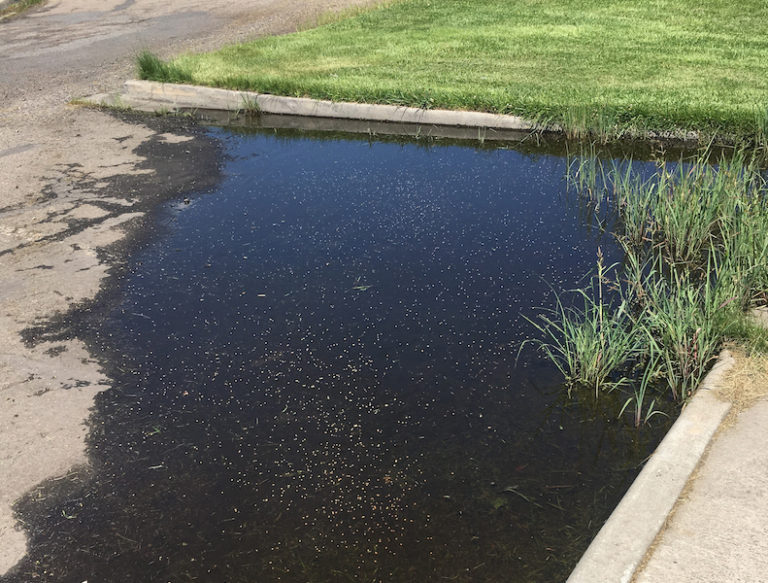This edition of “Personal Rootzone” is from Dr. Nancy Troyano, a board-certified medical entomologist with Rentokil Steritech. She earned her PhD from Virginia Tech and is responsible for leading and supporting the development of Pest Service Specialist training for Rentokil Steritech (www.rentokil-steritech.com):
Temperatures may be starting to cool, but one vestige of summer can hang around into mid-fall: mosquitoes. In outdoor public spaces, such as parks, campuses, and sports areas, mosquitoes are an annoyance and pose a heightened risk to people enjoying milder weather.
Mosquitoes can spread several diseases to humans, such as West Nile virus (WNV), Eastern Equine Encephalitis (EEE), and La Crosse encephalitis viruses. Mosquito bites can also sicken domestic animals, causing heartworm in dogs and EEE in horses.
In the US, WNV is a concern. As of September 4 this year, 326 human cases have been reported, resulting in 15 deaths. EEE, which can cause brain swelling and is fatal in 33 percent of cases, has a high number of reported cases this year. To date, three people in three states have died from the disease this year.
Reducing mosquito activity in public spaces
In shared public spaces, everyone can play a role in mosquito prevention with small actions. However, businesses and operators can take larger actions to reduce mosquito activity:
[START BULLETS]- Remove standing water. This is the top action to reduce mosquito activity. Standing water serves as a nursery for mosquitoes and it doesn’t take much. Larvae can live in as little as a tablespoon of water.
- Inspect items that can hold water. Playground and sports equipment, planters, or an uncapped fence can collect water and become a hot spot for activity. Add daily inspections of these habitats to grounds crews’ responsibilities, especially during peak season.
- Empty trash frequently. Trashcans can become a habitat for mosquitoes to lay eggs. If possible, use trashcans with self-closing lids to limit pest access.
- Watch for water collection points on the ground. Are there holes, uneven ground, or damaged sidewalk where water collects? Fill, grade, or repair these areas to prevent water collection. After extreme weather, monitor grounds for any changes.
- Aerate water bodies. Consider installing an aerator in lakes or ponds to keep water moving.
- Keep vegetation trimmed. Mosquitoes rest on vegetation. Keep grasses and shrubs trimmed to reduce attractiveness to mosquitoes.
- Use signs to educate. Engage the public. Use signs asking people to report standing water or mosquito activity and to wear an EPA-registered insect repellent when enjoying your space.
Mosquito management programs
Conducting routine mosquito management efforts protects your public space and its visitors from mosquitoes. Depending on your facility, you may need to go through different levels of approval to have treatment conducted. Employing professionals experienced in mosquito surveillance and treatments can reduce populations and incorporate proactive measures into your program.
Many cities and municipalities have mosquito abatement programs that cover surveillance and treatment of public spaces within a community. If you are responsible for a community-operated public space, speak to the community’s public works, public health, or environmental services manager for more information.
A mosquito management program in public areas, such as a park, may include multiple steps including:
- Surveillance to identify standing water;
- Habitat modification, such as filling tree holes or low-lying areas in the ground;
- Larvicide treatments of water showing activity to prevent adult mosquitoes;
- Trapping adult populations to understand species and density and determine control measures, such as ultra-low volume (ULV) fogging; and
- Public education.
“Local governments are often charged with protecting their citizens from public health threats, which include mosquitoes,” says Kris New, Regional Director with Vector Disease Control International (VDCI). “However, running a mosquito management program can involve a labyrinth of regulations, which can be difficult to navigate. Employing a mosquito abatement company familiar with best practices and regulations can often be the most responsible route for communities without the time or resources to invest in operating a program on their own.”
Privately run spaces can typically contract with pest control providers for mosquito control efforts on their properties, which may include a detailed inspection to determine potential sources, barrier treatments, or larvicide applications to non-public water bodies.
Don’t let your guard down this fall. By implementing these tips and working closely with a mosquito expert, you can create a more enjoyable environment and protect your visitors.


